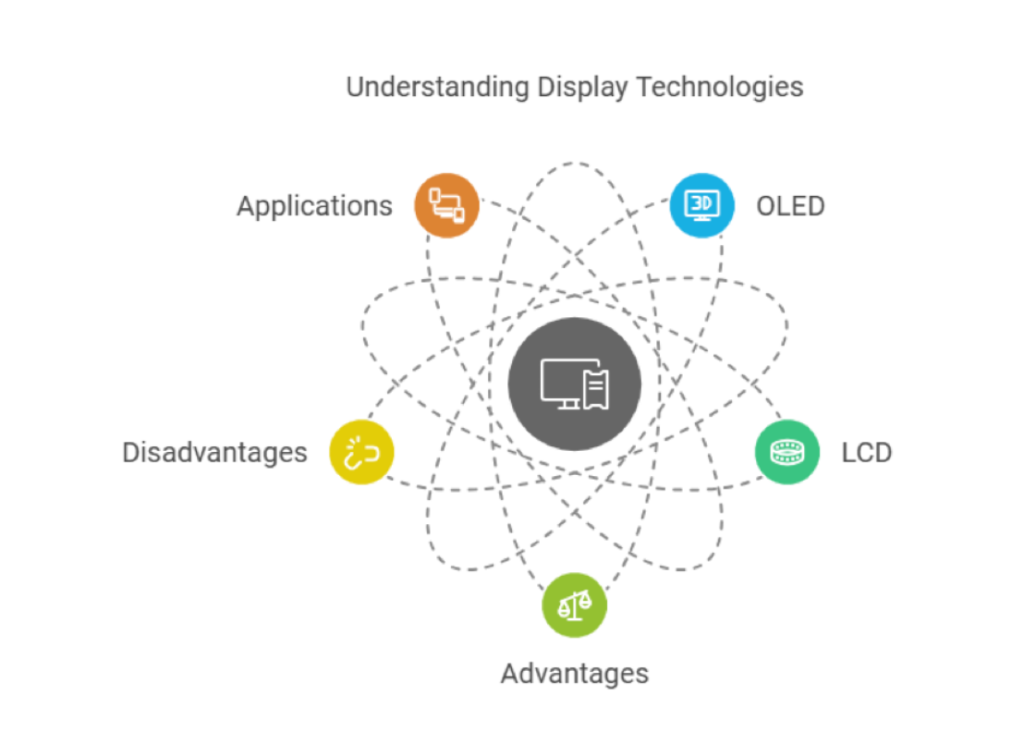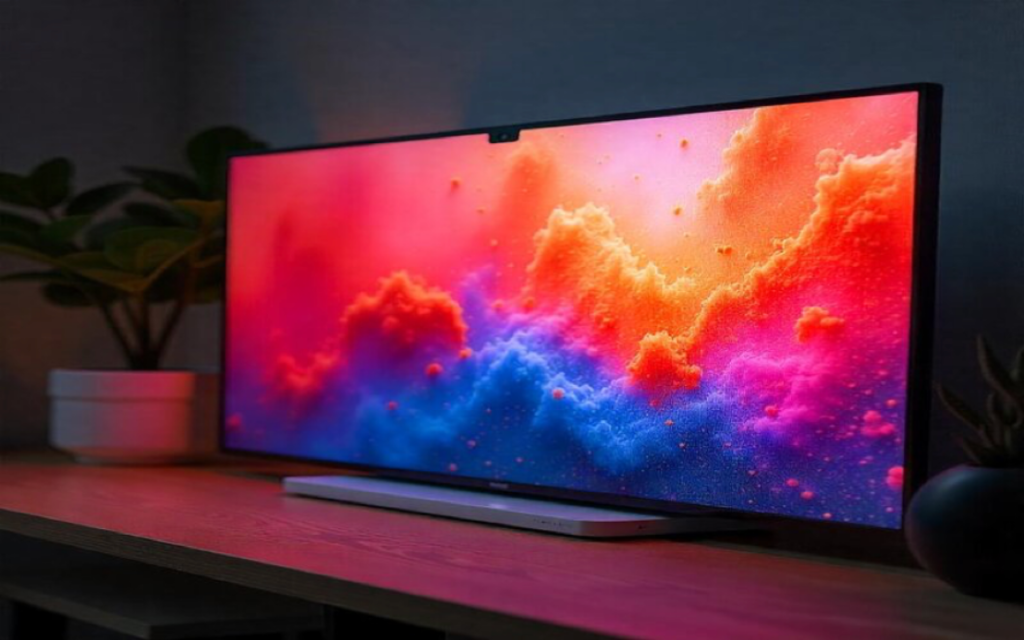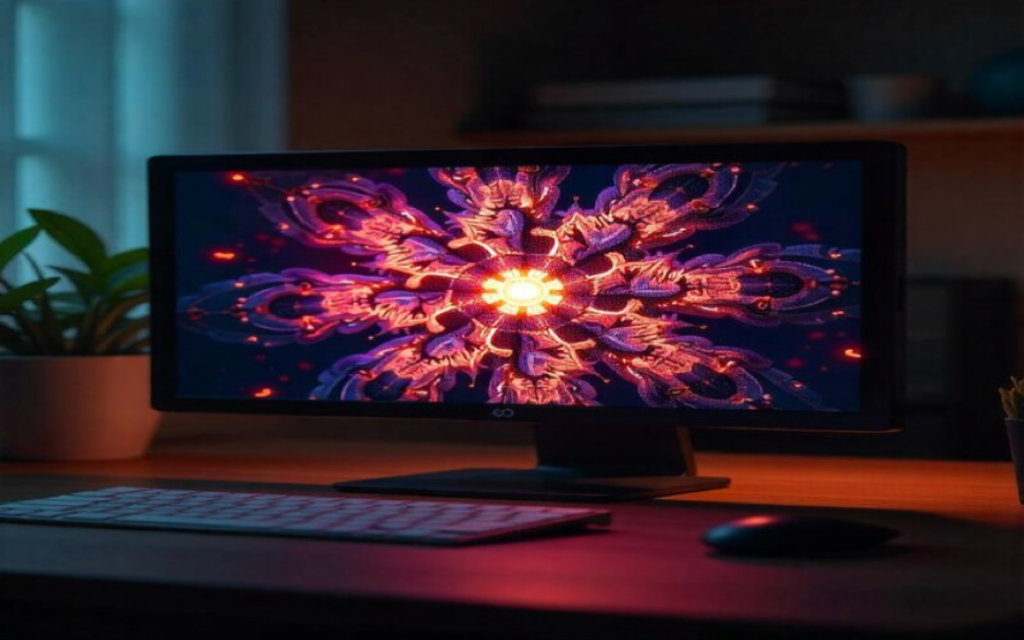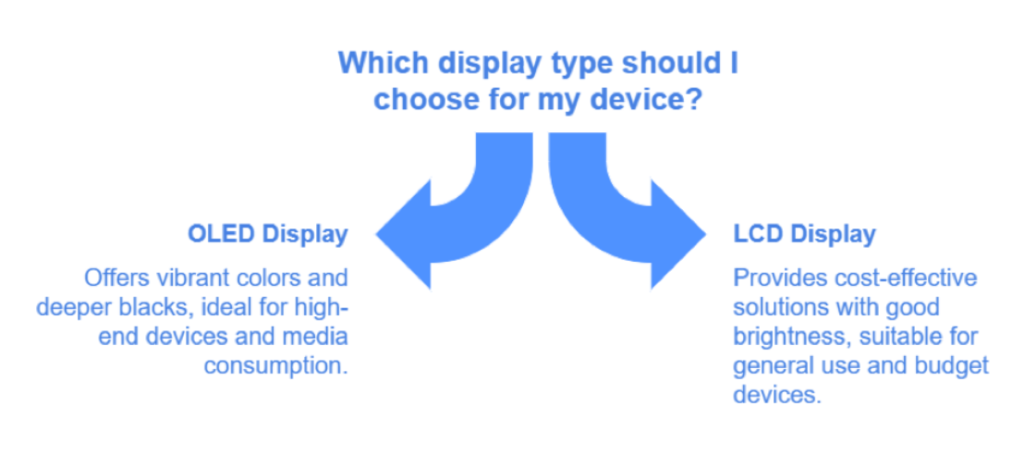Introduction

OLED screen vs LCD screen
OLED stands for Organic Light-Emitting Diode, and LCD stands for Liquid Crystal Display. They are the basics of the latest screen technology and are used from laptops and mobile phones to big screens like televisions and digital signage.
What is an OLED Screen?
The OLED screen is manufactured with organic material that emits light when electricity is applied. The other name of OLED is organic electroluminescent diode. The main element of the OLED screen is the emissive electroluminescent layer. These layers are settled between two electrodes.
When electricity is applied to an OLED screen, the pixels create light with colors. The unstimulated pixels create the black color on the screen. OLED screens can create different colors including red, green, and blue.
The OLED screen has two main categories based on the manufacturing elements: one is made of small organic molecules and the other is on polymers.
Advantages of OLED
OLED displays have many advantages over other displays. The following are the most common advantages of OLED.
- Picture Quality: OLED displays have better picture quality, contrast ratio, and viewing angles. They produce darker blacks and brighter whites, resulting in a higher contrast ratio.
They have nearly perfect viewing angles, you can enjoy excellent picture quality from any angle of your room’s corner. - Response Time: OLED displays have a faster response time, eliminating motion blur.
- Efficiency: OLED displays require no external light sources as they are self-emitting displays. OLED displays are more efficient and lighter than other display technologies.
- Battery Life: OLED displays have longer battery life. Unlike LED displays, OLED technology does not require backlighting. OLEDs generate their light to create images, which allows them to consume less power than other display technologies and enhances battery life.
- Easier Production Process: The production process of OLEDs is simple and easy. As the main products of these displays are plastics, they can be produced into larger light sheets.
- Larger Viewing Angles: OLEDs have a wide viewing angle of about 170 degrees. Unlike LCDs, which use a blocking light technique to create images, OLEDs generate their light. This allows them to have broader viewing angles.
Disadvantages of OLED
Although the technology is perfect for modern devices, OLED displays have a few disadvantages.
- Manufacturing process: The manufacturing process of OLED displays is complex and expensive. The overall production cost of the display becomes higher than the LCD display.
- Vulnerable to water: The OLED is vulnerable to water. It can easily be damaged with the contact of moisture and water.
What is an LCD Screen?
LCD is the acronym for Liquid Crystal Display. Introduced in 1973, it uses liquid crystals as the basic material to create images on the screen. Main components include liquid crystals, a backlight, color filters, and electrodes.
A liquid crystal display controls the amount of light passing through the crystal layers and creates images when electricity is applied. LCDs are used in many electronic devices, such as televisions, computer monitors, smartphones, calculators, portable electronic games, digital cameras, video projection systems, and electronic billboards.
Advantages of LCD
The LCD has some sophisticated advantages such as:
- Durability: LCD displays are durable. They have a long lifespan. The average lifespan of the LCDs is around 60000 hours or around 7 years.
- High Refresh Rate: LCDs are popular for their high refresh rate. If you are a game lover LCDs can give you an excellent smoother gaming experience.
- No Burn-In Issue: LCDs do not usually experience burn-in like the OLED displays. Permanent retention is rare in the LCD.
- Operating Temperature: The LCDs are suitable for extremely high and low temperatures.
- Affordability: LCDs are more reasonable than the OLED display.
Disadvantages of LCD
TLCDs have disadvantages like high maintenance costs, lower contrast ratio, limited viewing angles, and light pollution.
We learned the pros and cons of OLED and LCDs. Now let’s see the OLED screen vs LCD screen detail comparison in a table.
OLED Screen vs LCD Screen Comparison Table
| Feature | OLED (Organic Light-Emitting Diode) | LCD (Liquid Crystal Display) |
| Backlighting Technology | Every pixel creates its light and turns off completely in the OLED | LCD requires backlighting to illuminate the display |
| Contrast Ratio | It has an excellent contrast ratio | LCDs have a lower contrast ratio due to the light leakage in the backlight technique. |
| Color Accuracy | OLED displays are popular for vibrant and accurate colors, especially for darker tones. | The color accuracy of LCD is decent, but may not compare favorably to OLED in terms of richness and depth. |
| Viewing Angles | The viewing angles of the display are wider with minimal color distortion. | LCD viewing angle is narrower with some color shifting. |
| Brightness | It typically has lower peak brightness but is sufficient for most indoor use. | It has higher peak brightness and is better for bright environments. |
| Power Consumption | OLED displays consume less power. | LCDs consume more power than the OLEDs |
| Lifespan | The quality of the display can degrade over time (e.g., burn-in risk with static images). | They have longer lifespans and no burn-in issues. |
| Thickness | OLEDs are ultra-thin in design due to no backlight layer | LCDs are thick in design because of the backlight layer |
| Cost | They are more expensive than the LCD | LCDs are affordable and widely available. |
| Response Time | Faster, ideal for gaming and fast motion. | Slower, with potential motion blur. |
| Applications | OLED displays are popular for high-end TVs, smartphones, wearables, and premium monitors | LCDs are used in budget TVs, monitors, laptops, and tablets. |
| Outdoor Visibility | The OLEDs are moderately visible outdoors and struggle under direct sunlight. | Outdoor visibility of LCDs is better due to higher brightness levels. |
So what can we take away from this OLED screen vs LCD screen head-to-head comparison are:
- OLED is perfect for excellent image quality, high contrast, and thin design.
- If you give importance to the cost, brightness, and longevity, choose an LCD.
These were the distinctive discussions on OLED LCDs. Here are some frequently asked questions to provide a more clear concept of the display technologies.
FAQs
Which is better, AMOLED or OLED?
OLED and AMOLED both are popular display technologies. They both have some advantages. OLEDs are well known for their durability and cost-effectiveness.
AMOLED displays provide sharp pictures, flexibility in design, and energy efficiency. They are better than the OLEDs. However, the choice should be made based on specific needs and criteria.
Is an OLED display good for the eyes?
Displays with high brightness can emit blue light, which may lead to adverse effects on the eyes. However, OLED displays have a brightness adjustment feature that can help minimize eye strain.
If you experience any specific eye issues while using your OLED displays, try adjusting the brightness, taking regular breaks, and using blue light filters.
Is OLED safer than LCD?
Answering the question directly is complicated due to some disputes regarding the eye safety of different displays. However, it can be generally stated that OLED displays are better for the eyes than LCDs, thanks to their adjustable brightness and contrast levels.
Bottom line on OLED screen vs LCD screen
OLED and LCD screens both have some potential advantages and a few disadvantages. We have tried to represent all the elements to judge OLED screen vs LCD screen. You have to consider your own needs and criteria to choose one.
However, OLED is more advanced and excels in picture quality, contrast ratio, viewing angles, response time, efficiency, battery life, and thinness. On the other hand, LCD technology is affordable and durable, offering a high refresh rate and good outdoor visibility.
Thanks for staying with us.



